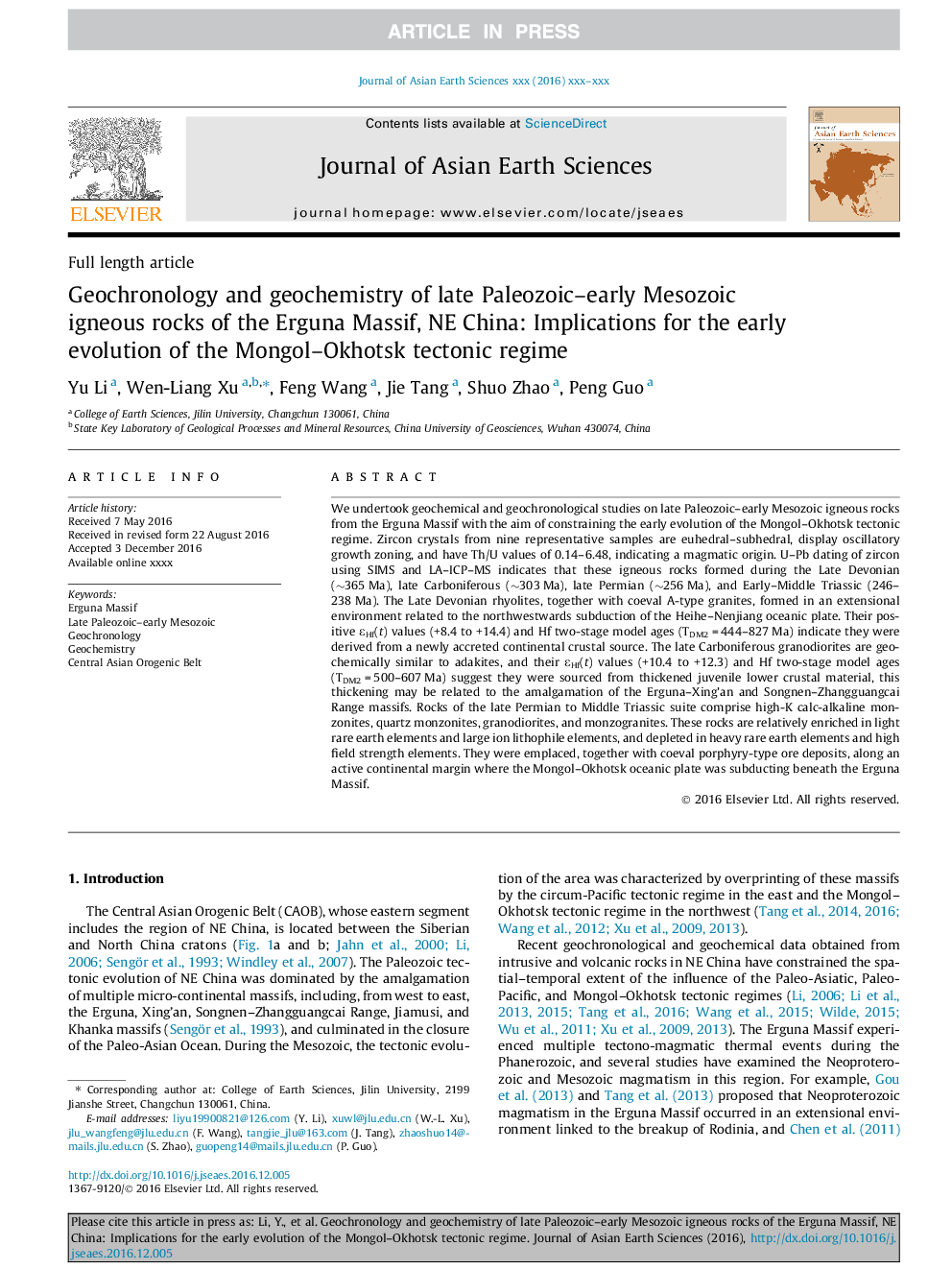| کد مقاله | کد نشریه | سال انتشار | مقاله انگلیسی | نسخه تمام متن |
|---|---|---|---|---|
| 5785979 | 1640328 | 2017 | 20 صفحه PDF | دانلود رایگان |
عنوان انگلیسی مقاله ISI
Geochronology and geochemistry of late Paleozoic-early Mesozoic igneous rocks of the Erguna Massif, NE China: Implications for the early evolution of the Mongol-Okhotsk tectonic regime
دانلود مقاله + سفارش ترجمه
دانلود مقاله ISI انگلیسی
رایگان برای ایرانیان
کلمات کلیدی
موضوعات مرتبط
مهندسی و علوم پایه
علوم زمین و سیارات
زمین شناسی
پیش نمایش صفحه اول مقاله

چکیده انگلیسی
We undertook geochemical and geochronological studies on late Paleozoic-early Mesozoic igneous rocks from the Erguna Massif with the aim of constraining the early evolution of the Mongol-Okhotsk tectonic regime. Zircon crystals from nine representative samples are euhedral-subhedral, display oscillatory growth zoning, and have Th/U values of 0.14-6.48, indicating a magmatic origin. U-Pb dating of zircon using SIMS and LA-ICP-MS indicates that these igneous rocks formed during the Late Devonian (â¼365 Ma), late Carboniferous (â¼303 Ma), late Permian (â¼256 Ma), and Early-Middle Triassic (246-238 Ma). The Late Devonian rhyolites, together with coeval A-type granites, formed in an extensional environment related to the northwestwards subduction of the Heihe-Nenjiang oceanic plate. Their positive εHf(t) values (+8.4 to +14.4) and Hf two-stage model ages (TDM2 = 444-827 Ma) indicate they were derived from a newly accreted continental crustal source. The late Carboniferous granodiorites are geochemically similar to adakites, and their εHf(t) values (+10.4 to +12.3) and Hf two-stage model ages (TDM2 = 500-607 Ma) suggest they were sourced from thickened juvenile lower crustal material, this thickening may be related to the amalgamation of the Erguna-Xing'an and Songnen-Zhangguangcai Range massifs. Rocks of the late Permian to Middle Triassic suite comprise high-K calc-alkaline monzonites, quartz monzonites, granodiorites, and monzogranites. These rocks are relatively enriched in light rare earth elements and large ion lithophile elements, and depleted in heavy rare earth elements and high field strength elements. They were emplaced, together with coeval porphyry-type ore deposits, along an active continental margin where the Mongol-Okhotsk oceanic plate was subducting beneath the Erguna Massif.
ناشر
Database: Elsevier - ScienceDirect (ساینس دایرکت)
Journal: Journal of Asian Earth Sciences - Volume 144, 15 August 2017, Pages 205-224
Journal: Journal of Asian Earth Sciences - Volume 144, 15 August 2017, Pages 205-224
نویسندگان
Yu Li, Wen-Liang Xu, Feng Wang, Jie Tang, Shuo Zhao, Peng Guo,